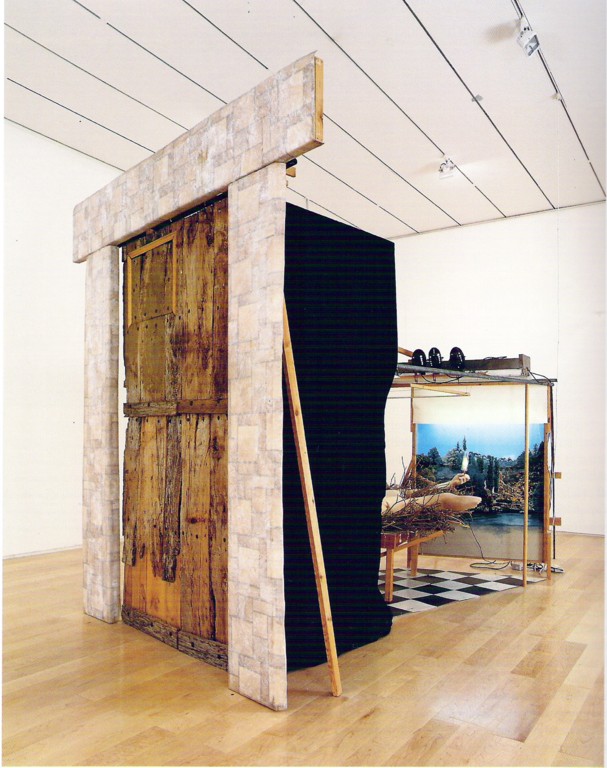What I liked best about
Étant donnés is it's mystery. I love how when you glance into the room it doesn't look like much: just a door on a wall. You have to walk close to it to realize that there is something more. You have to examine the door to notice two peep holes that can be looked through. A lot of people actaully don't spend the time to take the entire piece in; I started taking tallies of people who didn't realize that the piece was more than just the door. Within 5 minute time span 6 people did a quick glance into the room then proceeded to walk away.
The colors of this piece are broken up into what is on one side of the door and what is on the other side. On the viewers side, it is dark, dingy, and dimly lit; the door is brown, the bricks are a beige, the floor is also a brown. When you look through to the scene the colors are very different. There is a blue sky, green trees, and a blonde woman. What ties the colors of both sides together for me is that the figure is gray and lifeless compared to the rest of the scenery that surrounds her.
I'm not really sure that the colors bring me back to a time in my life. At the museum I didn't make the connection while taking notes but now that I'm formally writing it all down I realize that the piece as a whole reminds me of when I was no older than 5 years old. My grandfather is a dairy farmer. My family used to drive up to my grandparents home for the weekend, when we lived closer, every couple months. While we were there my grandfather would take us with him to the barn in the mornings. The barn door of the piece reminds me of that.
The museum itself has a dingy smell to it; everything smells old and sterile. When look through the peep holes of
Etant donnes you can't but help smell the old wood that makes up the door; the scent cannot be escaped when you're standing that close to the door. The smell makes the piece seem more real. It makes it more realistic that you are a peeping tom.
Because Etant donnes is located in the left hand corner of the Duchamp gallery, I feel that the piece gets forgotten. Tying back to what I said a few paragraphs ago...many people glance quickly into the room realize it's dark and has a door and assume that's all there is to see so they walk away. The room seems separate from the rest of the works in the gallery. Even though it is right next to the ready-mades and erotic objects, it's placement doesn't relate. The installation is a separate room, alienating itself from everything else. Obviously, the piece is the largest thing in the exhibit, but it's separated from everything else so that connection isn't made.
Comments heard regarding Etant donnes:
Woman: "whoa she's in there!?........(walked to information posted on wall and reads) it's a secret, it doesn't even tell you!"
Young Child: "What is that?"
Father: "You know what that is. Looks like Mommy....when she's naked."
Woman: "awww the waterfall is sparkly"



